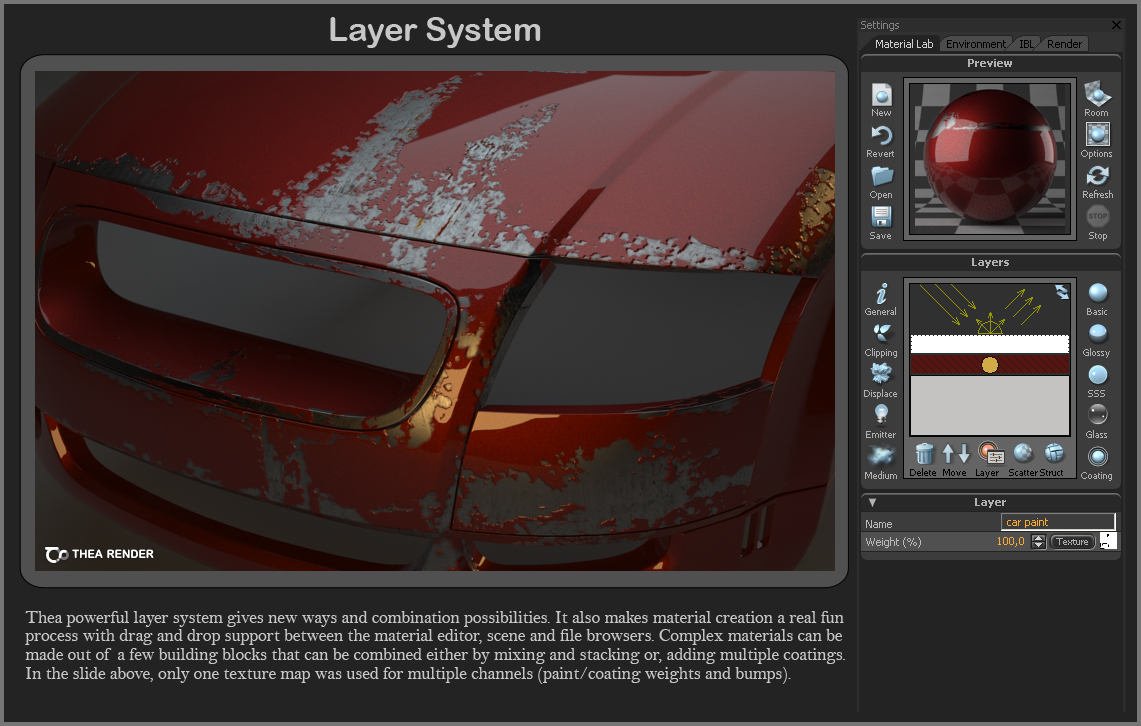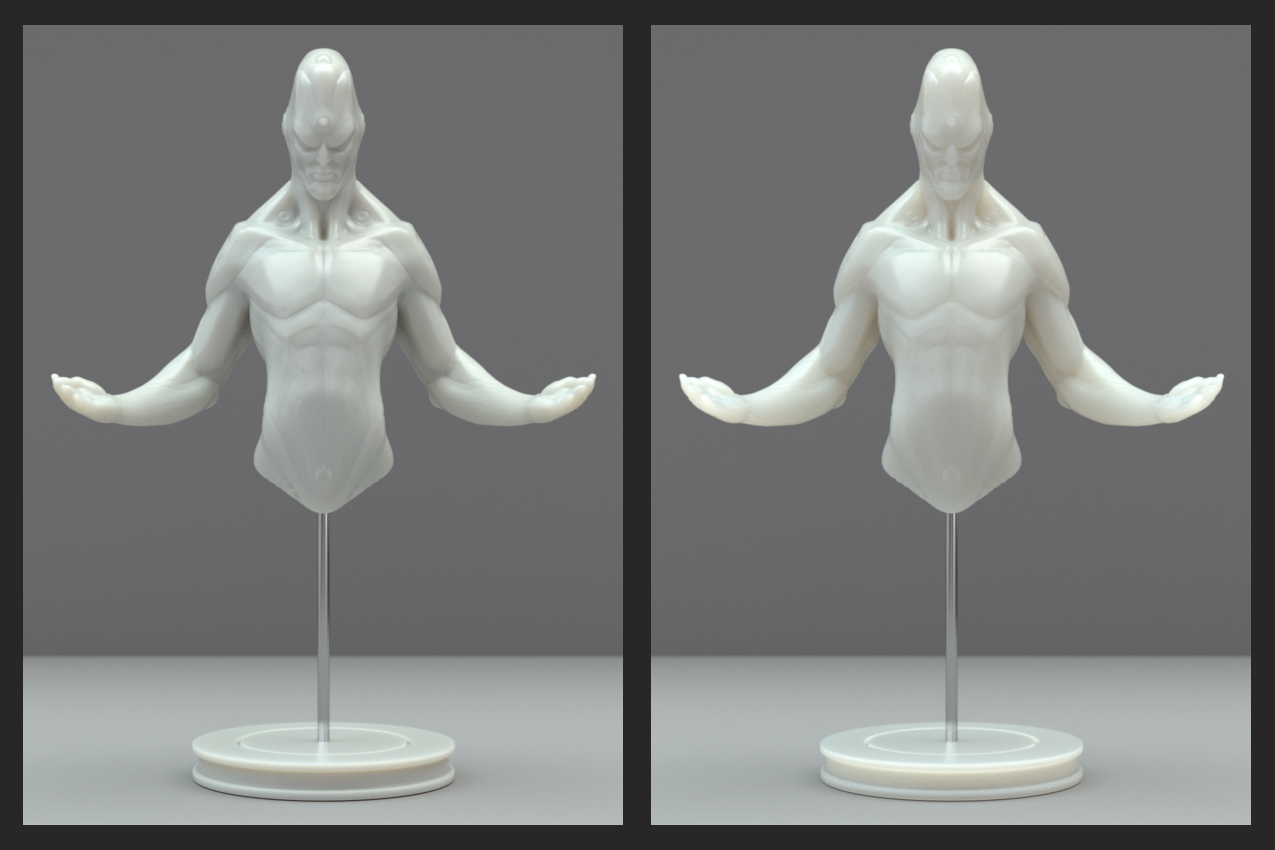Recommendations for product rendering?
-
When I've looked at the various plugins and renderers featured and advertised here at Sketchucation, or in Catchup and various other sites they usually use architectural or interior design examples, which makes sense, but what do you guys think works best for product rendering, with a good balance between ease of use and rendering results.
-
Definitely Keyshot. Fast, very simple ( with one of the best Material Editors) and made for Product Designs.
You didn't asked for the price
-
The renders I know are versatile, and should work fine with both product and interior design rendering (as well as outdoor scenes). Always try before you buy.
V-Ray offers full featured 30 day demo.
Maxwell has a free version with image size restricted to 800 x 800 pixels.
Kertkythea is a free alternative.
I've also tried Twilight, LightUp and SUPodium, and didn't like them, but that's just a personal preference.Tell us what you've tried and we can guide you.
-
The only renderer I've tried with Sketchup is SUPodium, which seems fine for a lot of material types, but it's default base shader seems like a sort of matte blinn material or something, but whatever it is it doesn't work too well for a shiny plastics or as glossy paint like car paint.
I haven't tried V-Ray yet, but I've seen a lot of talk about it, so I guess that's next on my list of tryouts. I was just hoping to find something I could use for less than $400, but that might just be an impossibility.
Keyshot looks stellar! About a month ago I was talking to a friend of mine who mentioned this but I never followed up on it, so I'm glad you brought it up. If only it wasn't $1000, but maybe sometime. I actually can't wait to play around with the demo.
In school I did a fair amount of modelling and rendering using Maya, and while Maya is very powerful and versatile, it's expensive, stiff, and rather obtuse in the way it's organized as a program and it's methods.
-
-
You may try Thea Render. It fits your requirements extremely well.
Here is a link to a part of Thea's Gallery related to product design.
Thea has very flexible material layering system:

Here is an example of a shiny plastic using sub-surface scattering:

An one of my favorite examples:

Current beta discount price for 'Thea for SketchUp' bundle including the integrated plugin, standalone studio with 2 rendering nodes is just 320 euro, which is very close to your threshold.
Thea offers both Unbiased and Biased rendering modes. With an upcoming GPU support shown in a trailer, in my opinion, it is best value for the money invested.
-
I'll give Thea a try next.
Right now I'm trying out the Keyshot demo and I have to say that it's one of the best programs I've ever used. It does exactly what it's supposed to and it does it extremely well. Absurdly easy to use and the results are true professional quality. The texture/material library makes everything ready to go and editing is quick and easy. But it is expensive and it's not versatile. It's made for product rendering and that's pretty much it. Not to say that you couldn't use it for other things, but it's a very focused program with results that speak for itself. I won't be able to get this anytime soon, but I'm putting it on my "to buy" list.
-
I've been trying out Thea for a couple of days and been happy with it so far. It's a lot of program for the price and the interface is good. It has most of the major features of a high end renderer with similar results. Not super speedy though.
-
I felt like maybe I should add to my last post concerning Keyshot:
I said that Keyshot is "not versatile", but that's not a fair claim because you have to understand how this program works in order to understand what you are dealing with. Keyshot uses a unique process where you import your model into a predefined 32 bit high definition environment where the lighting is actually based upon the conditions of this environment in a real world sense. What that means is that you don't set up your lights or set up your lighting parameters as you would in standard rendering software. Instead you drag and drop the environment you want along with a huge range of editable materials right into your rendering or onto your model, which you can then adjust the intensity of the lighting, the position of the model, and the hue and coarseness of the material placed upon your model. The results update in real time. It's quite stunning the first time you see it in action.
Ok, so back to why I mentioned versatility specifically. At first I couldn't see how this would work for interior design or outdoor modeled environments, but now I've realized that you can import your own backdrop images. So even though Keyshot is not CURRENTLY supplying a library of organic materials such as foliage or skin (plenty of fabric though) you could bring in these elements as a 2D backdrop image or use it in conjunction with Photoshop, but using Keyshot for the objects you really want the focus on. This might sound like it's more work, but I tried a couple of experiments of dropping a basic Sketchup building and a basic interior into Keyshot and then using backdrop images from the internet. The results were surprisingly good.
I highly recommend you try this out, if only for the eye opening experience. You will know whether this is something that interests you within about fifteen minutes. It's that easy.
-
I have to recant on the previous post where I stated that Keyshot doesn't allow for oxidized, weathered or aged material. This is incorrect. Keyshot has a label tool system that allows you to import your own graphics into the material library that is typically used for branding graphics but can also be used to make layered, oxidized or weathered effects with typical reflectivity and depth adjustment controls.
I also noticed that they have now implemented procedural textures for creating random texture materials such as granite, wood, oxidized metal, marble, and leather.
And their large drag and drop material library just keeps growing. They now have all the Pantone color library, internal lighting, caustic materials, Mold-tech textures, among others...
-
Seems you like it...
-
@xiombarg said:
I've been trying out Thea for a couple of days and been happy with it so far. It's a lot of program for the price and the interface is good. It has most of the major features of a high end renderer with similar results. Not super speedy though.
The speed depends on a lot of different factors, such as lighting, render method (plus settings)and material complexity etc.
I don't have a particularly high spec PC, but when I work on product-viz projects with Thea I regularly get clean unbiased results in 20 minutes and good quality biased renders in 5 minutes or less.
-
i'd say thea is pretty damn fast!!
-
That was my point

-
V-Ray for SketchUp 1.6 Beta just started up recently
 ... RT is pretty fast.
... RT is pretty fast. -
@burkhard said:
Seems you like it...
That would be an affirmative. Keyframe is so much more powerful than I expected.

As far as Thea goes, I guess I don't really know what is considered to be fast when dealing with renderings for Sketchup, but with the low polygon counts that are typical in my Sketchup models, a rendering in any typical animation program might take a minute or two at most for a good biased rendering. But I do understand that animation programs are in a whole different class and price point.
-
@hieru said:
That was my point

Oh I know, I was just responding to xiombarg and confirming your findings.

-
@xiombarg said:
As far as Thea goes, I guess I don't really know what is considered to be fast when dealing with renderings for Sketchup, but with the low polygon counts that are typical in my Sketchup models, a rendering in any typical animation program might take a minute or two at most for a good biased rendering.
You could try Thea Presto GPU engine when it will be available publicly.
-
@tomasz said:
You could try Thea Presto GPU engine when it will be available publicly.
The Rolex and diamond ring animations look excellent. I haven't committed myself to anything yet so Thea Presto GPU looks like a really good option.
-
The Thea HDRI pack sounds like an awesome addition for product rendering. The HDRI pack combined with the Presto GPU and all combined with a very reasonable price point, Thea seems to be the best rendering software for your dollar available.
Advertisement









